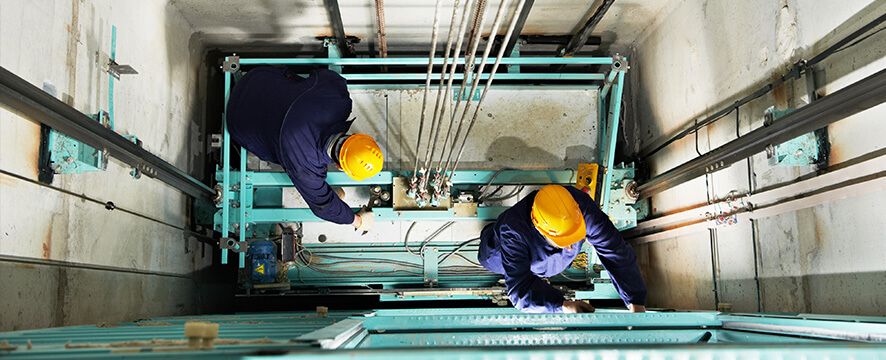Comprehensive Overview to Lift Equipments and Their Maintenance
Browsing the complex world of elevator systems and their upkeep is a task that demands accuracy and knowledge. From the various types of elevator systems in use to the careful adherence to safety and security policies, the maintenance of these upright transport devices is a diverse venture.
Types of Elevator Systems
The most common kinds include hydraulic lifts, grip elevators, machine-room-less lifts, and vacuum cleaner lifts. Hydraulic lifts are ideal for low-rise buildings and make use of a hydraulic piston to move the elevator car. Machine-room-less lifts are a space-saving choice as they do not need a separate maker room for the lift machinery.
Each type of lift system has its very own advantages and downsides, making it vital for building owners and programmers to very carefully consider their details needs prior to choosing one of the most ideal alternative. Elements such as developing height, area accessibility, power effectiveness, and budget restraints all play a significant duty in figuring out the finest elevator system for a specific structure.
Common Maintenance Problems
Regular upkeep of elevator systems is vital to make sure smooth operation and extend their lifespan. In spite of normal maintenance, lift systems can still experience usual maintenance concerns that need to be quickly dealt with to stop interruptions in solution. Among the most frequent problems is door breakdowns. Lift doors might get misaligned, resulting in issues with opening and closing effectively. This can create hold-ups and security hazards, requiring immediate focus from upkeep specialists. One more typical issue is connected to the lift's leveling accuracy. Travelers may experience tripping threats and pain if the lift does not line up properly with the floorings. In addition, concerns with the control system, such as sensing unit issues or electrical concerns, can cause the lift to malfunction or quit working completely. Routine evaluations and positive maintenance can aid recognize and deal with these typical maintenance problems before they rise and affect the general efficiency of the lift system.
Safety And Security Laws and Compliance
Adhering to strict safety laws and guaranteeing compliance with market standards are paramount for preserving the functional honesty of lift systems. Elevators go through an extensive collection of security policies to secure guests, upkeep workers, and the public. Regulatory bodies such as the Occupational Safety and Health Administration (OSHA) in the USA and the European Lift Association (ELA) in Europe establish standards that cover different elements of lift layout, installation, maintenance, and operation.
Conformity with these policies is not only a legal need however additionally an ethical obligation for structure owners and elevator maintenance companies. Failure to fulfill security requirements can result in penalties, lawful liabilities, and, most importantly, threaten the safety and security of individuals using the lift. Routine inspections, upkeep checks, and adherence to safety methods detailed in the guidelines are vital to guarantee the secure and reliable operation of lift systems. By prioritizing safety policies and conformity, stakeholders can copyright the trust of the general public and alleviate prospective threats connected with elevator usage.
Ideal Practices for Upkeep

Structure owners should additionally think about investing in modernization upgrades to enhance the effectiveness and security of their lift systems. By adhering to these ideal techniques, elevator systems can operate smoothly and safely, providing reliable upright transportation for passengers.

Advanced Technologies for Performance
Applying sophisticated technologies in lift systems can considerably enhance functional helpful site effectiveness and passenger experience. These systems permit travelers to input their desired floor before going into the elevator, which then routes them to the most reliable cars and truck.
In addition, the assimilation of clever sensors and predictive upkeep capabilities has revolutionized elevator maintenance. These sensors can find prospective issues before they escalate, making it possible for positive upkeep treatments and decreasing downtime. Furthermore, the use of energy-efficient parts and regenerative drives helps in reducing power intake and operating expense in elevator systems.
Furthermore, the execution of cloud-based surveillance and remote diagnostics permits real-time monitoring of elevator performance and prompt troubleshooting of any kind of malfunctions. This positive method not just enhances system reliability however additionally boosts the general customer experience by ensuring nonstop and smooth lift procedures.
Conclusion
To conclude, comprehending the different kinds of lift systems, typical upkeep issues, security policies, best upkeep practices, and progressed innovations for performance is crucial for guaranteeing the smooth procedure of elevators. By adhering to security policies and carrying out finest techniques for upkeep, building owners can prolong the life expectancy of their lift systems and ensure the safety and security of guests. It is vital to remain upgraded on the most up to date developments in lift modern technology to boost performance and dependability.
The most typical types include hydraulic lifts, traction elevators, machine-room-less lifts, and vacuum cleaner elevators. Hydraulic elevators are ideal for low-rise structures and make use of a hydraulic piston to move the lift car. Machine-room-less elevators are a space-saving choice as they do not call for a different equipment area for the lift machinery. Routine evaluations and positive maintenance can aid recognize and fix these typical maintenance problems prior to they intensify and influence the overall efficiency of the elevator official website system.

Comments on “Raise Your Service: Choosing Lift Maintenance Services and Repair Companies Near Me”